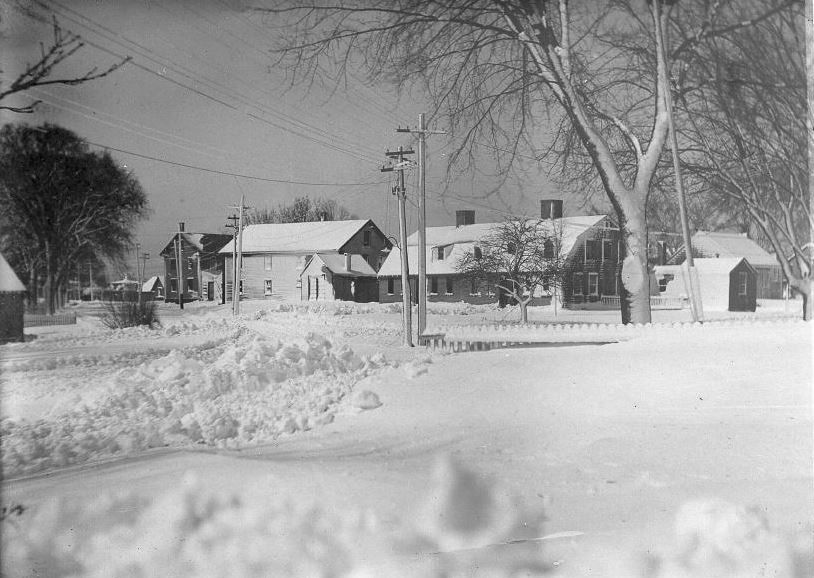Hingham Municipal Lighting Plant, MA, 1919, Pole Changeovers in Progress, Snow.
By Joe Maurath, Jr.; posted July 13, 2020
View Original: Click to zoom, then click to magnify (814 x 578) 147KB

|
A lot of the original line construction from the 1890s (the older poles are seen here) were meeting the ends of their useful lives. In addition to becoming unsafe and potentially unreliable for the delivery of electricity, a lot of these old poles were removed from service through the teens owing to new, heavier wire that was being installed to satisfy added capacity. The ever-popular electric light and new electrical appliances meant renewing utility infrastructure so that reliable service and customer demand could be met during for then and the future. This was taking place across most of urban and suburban America at that time. The above photo illustrates pole changeovers and new wire installation in progress during the winter of 1919 in Hingham, MA in answer to these needs. Note the new, taller poles with six-pin crossarms having steel braces. The early arms were shorter and were simply secured by two lag bolts to their poles, without braces or through-bolts in many instances. Many other public and privately owned electric utilities here in New England uncommonly used glass insulators with upgrades commencing around the teens or so. Porcelain pintypes typically were the rule, although glass ones sometimes were installed on updated lines as markers for neutral and street lighting wires. Also, some got reuse when porcelain types were short in supply. The incandescent "gooseneck" style street light fixtures as also seen here sometimes were placed on the new pole through the late teens. Those in worn condition with little apparent life left in them were replaced by ornate fixtures having a 1-1/4 inch-diameter pipe bracket with a wrought iron scroll for an undersupport. These luminaires also employed a porcelain fixture head (these were green or brown) which withstood the weather and high voltage series-circuit surges much better than their predecessors, having had fixture bodies chiefly made of metal. The new lights with the scroll arm brackets also came with a porcelain-enameled 20-inch-diameter ruffled-shade (radial-wave) reflector and were first seen on Hingham streets (like elsewhere around the country) about 1920. Maintenance is a new ending job when it comes to roadway lighting. The town utility in their year-end 1919 report that "of the street lighting bulbs replaced during the year, 460 were burned out; 40 damaged by lightning and 271 were broken; at a total annual replacement cost of $691.11". The Light Department's commissioners "calls attention to the large number of lamps broken by boys, and urges parents to endeavor to put a stop to this practice." By year-end 1919, there were 702 street lamps in town and an additional 13 used only in the summer." These lights were along coastal streets in the northerly part of Hingham with large, impressive houses, occupied as summer residences. Also during 1919, the forementioned utility's two four-wheeled workhorses were a Studebaker and Ford truck. Click "Next" for a closer look at the two poles together in the center of this image. |